Tiger Leaping Gorge
Tiger Leaping Gorge, known as "danger", is one of the deepest canyons in China. The Tiger Leaping Gorge can be divided into Shangri-La and Lijiang sections. Shangri-La Tiger Leaping Gorge is a national AAAA-class tourist scenic spot, which includes the upper, middle and lower Tiger Leaping Gorge and high-way hiking.
Tiger Leaping Gorge is located in the town of Tiger Leaping Gorge in Shangri-La City, 96 kilometers away from Shangri-La City, 80 kilometers away from Lijiang City. The Jinsha River, which originates from the snow mountain of Dandong, Qinghai, is a long way from here.
Suddenly encountering the obstruction of Yulong and Haba snowy mountains, the calm and peaceful river water suddenly became irresistible. Tiger Leaping Gorge is the largest canyon of the Yangtze River in Wanli. It was named after the legend of the Tiger Leaping over the river from the heart stone to the river between Haba and Yulong snowy mountains. 3900 meters below the water rock roar, 216 meters short distance drop, with its high mountains, deep, steep and steep.
There are gas stations on the way from Lijiang to the scenic spot. There are no banks and medical facilities in and around the scenic spot, so everyone should prepare in advance. Tiger Leaping Gorge is 80 kilometers away from the downtown area of Lijiang City. It is 17 kilometers long in the upper reaches of Jinsha River. It is divided into three sections: Tiger Leaping, Middle Tiger Leaping and Xiahu Tiger Leaping. The road is 25 kilometers long, the snow mountain of Yulong is in the east, the snow mountain of Haba in Shangri-La City is in the west, and the vertical elevation difference of the canyon is more than 3,900 meters. It is one of the deepest canyons in the world. The narrowest part of the river, only about 30 meters, legend has it that the tiger down the mountain, in the river on the reef slightly raised feet, you can fly over, so called Tiger Leaping Gorge. There are 18 reefs in the gorge, 7 dangerous banks and 10 waterfalls, up to 10 meters.
Hutiaoxia gorge at an altitude of 1800 meters; Yulong Snow Mountain on the south bank at an altitude of 5596 meters, the side of the gorge is steep, almost cliff, no road to find; Haba Snow Mountain on the north bank at an altitude of 5396 meters, the side of the gorge slightly gentle slope, this side of a simple gravel road, through the whole gorge, there is a footpath above the road. Shanghhutiao is the narrowest section of the canyon, 9 kilometers away from the highway town of Tiger Leaping Gorge. Its core lies on a boulder, lying in the middle of the stream, like a fallen waterfall and a high ridge standing in front of us, dividing the torrent into two parts and shaking the sky. Legend has it that a tiger once leaped from the side of Yulong Snow Mountain to Haba Snow Mountain by taking advantage of this huge rock in the center of the river, so the stone was named Tiger Leaping Stone.
Down the tiger. Xiahu Tiger Leaping has a huge depth of 1,000 meters. It is near the exit of Tiger Leaping Gorge. It is the best place to enjoy Tiger Leaping Gorge.
When entering the Tiger Leaping Gorge in Lijiang, Yunnan Province, it should be from Dawu Township, Yulong Naxi Autonomous County, Lijiang City. This is actually the Xiahu Tiger Leaping Gorge area. Tiger jump through the tiger jump, tiger jump on the Tiger jump Daqiaotou Town, Dayou Township to visit Tiger jump Gorge, Lijiang area bus passenger station tickets, ticket prices about 23.5 yuan. Tiger Leaping Gorge tickets are 65 yuan.
In October 23, 2005, China's most beautiful place list was released in Beijing. The ten most beautiful canyons in China were Yarlung Zangbo Grand Canyon, Jinsha River Tiger Leaping Gorge, Three Gorges of the Yangtze River, Nujiang Grand Canyon, Meili Grand Canyon of Lancang River, Tailuge Grand Canyon, Shanxi-Shaanxi Grand Canyon of the Yellow River, Jinkou Grand Canyon of the Dadu River, Taihang Mountain Grand Canyon, and Kuche Grand Canyon of Tianshan Mountain.
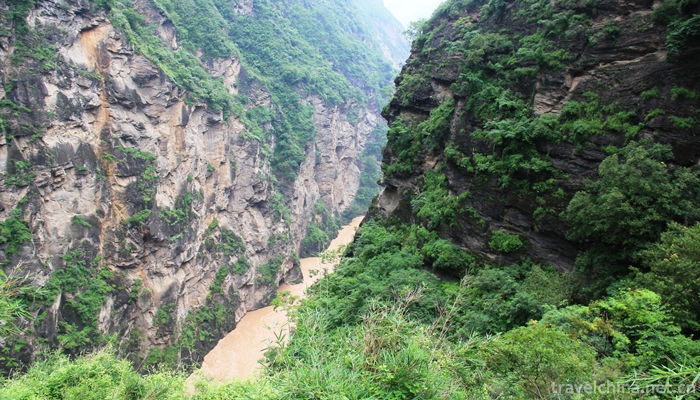
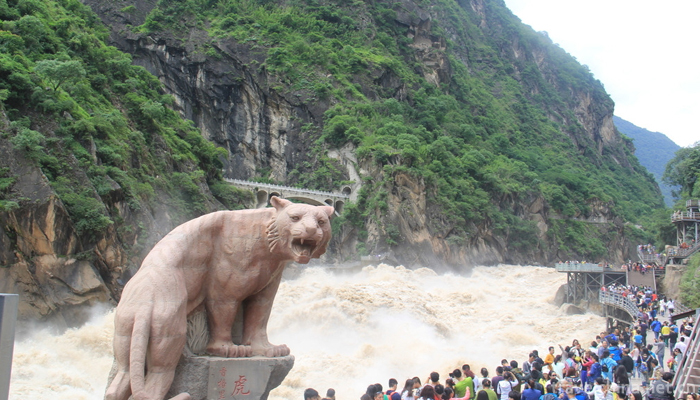
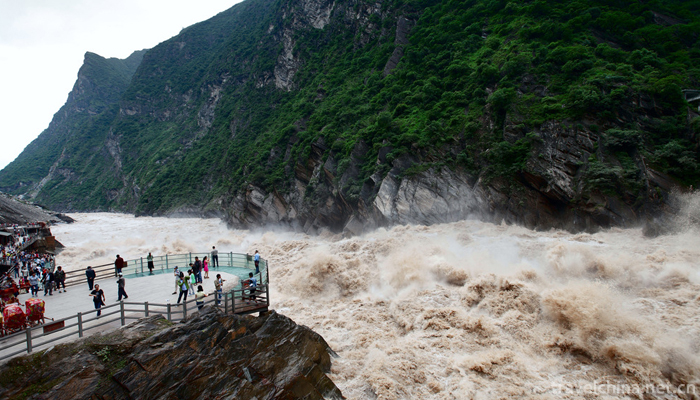


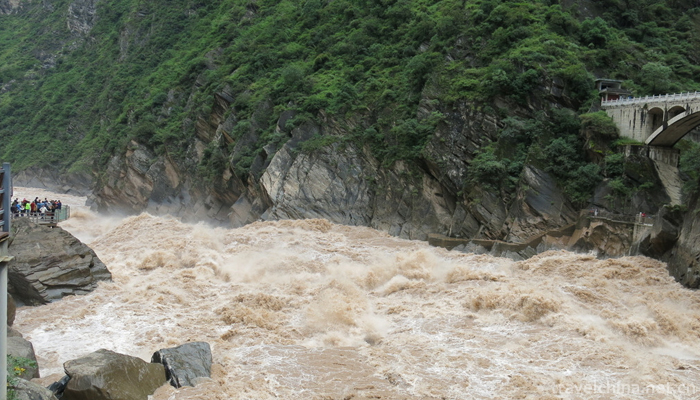

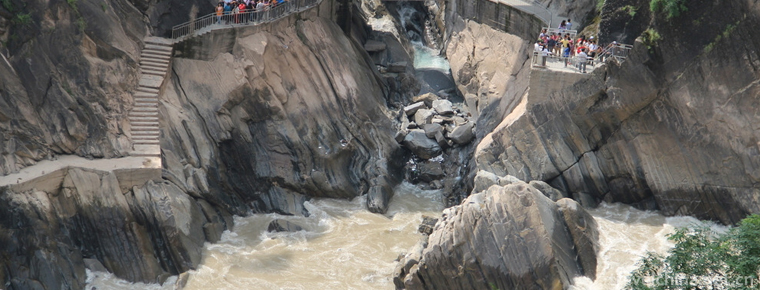
-
1.Shantou beef ballTime 2018-11-02
-
2.Linzhi Basongcuo Scenic Area
Basongtao, also known as Caogao Lake, means "green water" in Tibetan. It is about 18 kilometers long. Its surface area is about 27 square kilometers.
Time 2018-12-12 -
3.Xingwen sea
Xingwenshihai is located in Xingwen County, Yibin City, Sichuan Province. It is located in the transition zone between Sichuan Basin and Yunnan-Guizhou Plateau. Its total area is about 156 square kilo
Time 2018-12-24 -
4.Nanhai Temple
Nanhai Temple, also known as the Polo Temple, is a place where ancient Chinese laborers worship the sea. Located in Miaotou Village, Huangpu District, Guangzhou
Time 2018-12-31 -
5.Eight polar boxing
Bajiquan is a kind of boxing in Chinese Wushu. The word "eight poles" of this boxing method originated from the concept of Palaeogeography and originated from the Han Dynasty
Time 2019-04-02 -
6.The Mausoleum of the Yellow Emperor
The Mausoleum of the Yellow Emperor is one of the national intangible cultural heritages, which has formed a certain scale format and sacrificial ceremonies in the long-term practice.
Time 2019-05-04 -
7.Shandong Qinshu
Shandong Qinshu is one of the traditional folk art varieties in Shandong area, also known as "Xiaoqu", "Yangqin", "Shandong Yangqin", "improved Qinshu" and so o
Time 2019-06-13 -
8.Legend of Su Dongpo
The legend of Su Dongpo is a group of traditional folklore stories evolved from the story of Su Shi, a great writer in the Northern Song Dynasty.
Time 2019-06-16 -
9.Chord cavity
Based on Pingli dialect in Ankang City, Shaanxi Province, there are 13 singing patterns, including 8 commonly used tunes, 18 suona tunes and 30 gongs and drums. Pingli string is a complete set of loca
Time 2019-07-03 -
10.Encouragement of Miao Nationality in Western Hunan
Encouraged by the Miao people in Western Hunan Province, the traditional dance of Tujia and Miao Autonomous Prefecture in Western Hunan Province is one of the national intangible cultural heritage.
Time 2019-07-03 -
11.Bo Er Hu boroqul
Bolhoff also worked for polo, Boruun, Boluo, rohun, and so on. Mongolia state Senior general. Mongolia famous generals, Genghis Khan One of the four founding fathers. Picked up by the battlefield, by
Time 2019-09-14 -
12.Hefei University
hefei university (Hefei University), located in Hefei, the capital of Anhui, is a common higher education institution jointly organized by the state and local governments and cities and municipalities
Time 2019-11-13